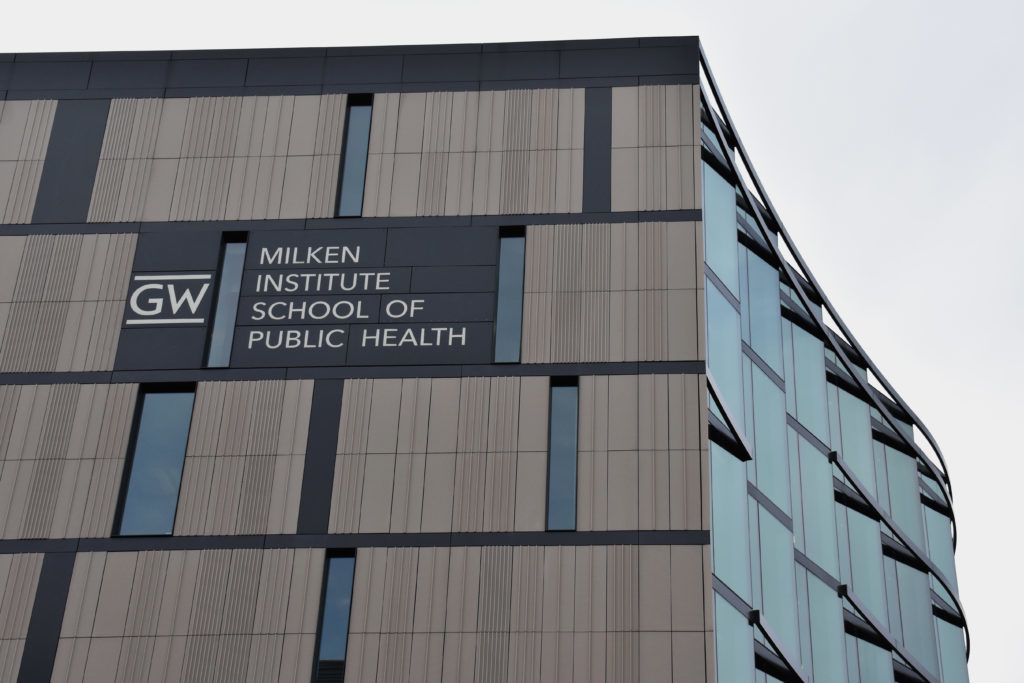A study provides the first-ever estimate of how air pollution affects global rates of heart and lung disease in at least 250 urban cities.
Susan Anenberg, an associate professor of occupational and environmental health who led the study, found that small air particles, labeled PM 2.5, caused 13 to 125 deaths per 100,000 residents in urban cities like D.C. and Shanghai. Pollution experts said findings from studies that investigate links between pollution and health risks can influence policymakers to regulate the underlying causes of particulate pollution, traffic and industrial production.
“The findings from this study suggest that policymakers can help not only clean the air, but keep people healthy and reduce greenhouse gases, by supporting initiatives that transition society away from fossil fuel use,” Anenberg said in a public health school release.
Ploy Achakulwisut, a staff scientist at the Stockholm Environmental Institute and a former postdoctoral scientist at GW who worked on the study, said particulate pollution is a leading cause of death worldwide. She said countries must act to decrease PM 2.5 levels because the number of people affected by particulate pollution will increase as urban populations grow.
“Tackling urban air pollution is high on the global sustainable development and health agendas,” Achakulwisut said.
She said air in 21 of the 250 cities studied contained PM 2.5 levels below World Health Organization guidelines, and the study found that 104 cities exceeded safe limits for PM 2.5 levels.
Achakulwisut said researchers found that rates of PM 2.5 exposure are low in 82 high-income cities, including D.C., but wealthy urban areas tend to boast higher consumption-based carbon footprints. She said that developed countries place limits on the emission of harmful gases, relocate industrial power plants outside of cities and outsource manufacturing enterprises to other countries to reduce air pollution.
Achakulwisut said the research team received funding from the University and the NASA Health and Air Quality Applied Science Team – an organization that uses satellite data to conduct research on how air pollution affects health.
Daven Henze, an associate professor of mechanical engineering at the University of Colorado Boulder who worked on the study, said a “weak” correlation exists between rates of carbon dioxide emission and negative health effects of PM 2.5. He said some cities reduce air pollutants using strategies that do not also reduce energy and fuel consumption, which may contribute to rising levels of CO2 emissions.
He added that cities faced with high PM 2.5 levels can decrease carbon consumption to reduce concentrations of fine particulate matter and combat climate change.
“This also suggests that in cities that still have high air pollution health burdens, there are opportunities to address both air pollution and climate challenges through low-carbon development,” he said.
Henze said the research team analyzed NASA satellite data to estimate atmospheric PM 2.5 levels. He said the team consulted population distributions, mortality rates and economic indicators to estimate the number of premature deaths attributable to PM pollution.
Pollution experts said that small air particles, also known as fine particulate matter, can negatively affect urban residents’ lung, heart and circulatory health, and that policymakers must enact regulations to reduce levels of particulate pollution.
Marissa Baker, an acting assistant professor of environmental and occupational health sciences at the University of Washington, said combustion reactions in vehicles, wildfires and smokestacks emit disease-causing particles.
Baker said fine particulate matter is small enough to stick in the lungs and diffuse into the bloodstream and is more harmful to inhale than larger particles in the air, like dust. She said the particles can cause illnesses like chronic obstructive pulmonary disease, lung cancer and heart attacks and may contribute to gastrointestinal harm and liver disease.
“It’s a combination of the fact that everyone is exposed to them in one way or another, and also that they have the most potential to exert more serious health effects,” Brown said.
Baker added that policymakers can encourage drivers to carpool or use public transportation to cut down on particulate air pollution because traffic-related pollution is a major contributor to particulate pollution in urban environments.
“A lot of things we do to prevent climate change can also mitigate PM exposure,” she said.
Patrick O’Shaughnessy, a professor of occupational and environmental health at the University of Iowa, said residents in urban cities and areas with mass industrial production – where particulate pollutants from cars and factories are common – are likely to suffer adverse health effects.
O’Shaughnessy added that water pollution is isolated to affected bodies of water because people don’t have to come into contact with the water. But particulate pollution is far more difficult to avoid because residents in areas with high levels of PM 2.5 have no choice but to breathe polluted air, he said.
“We can’t stop breathing the air we are forced to breathe,” O’Shaughnessy said.
Ed Prestera contributed reporting.





